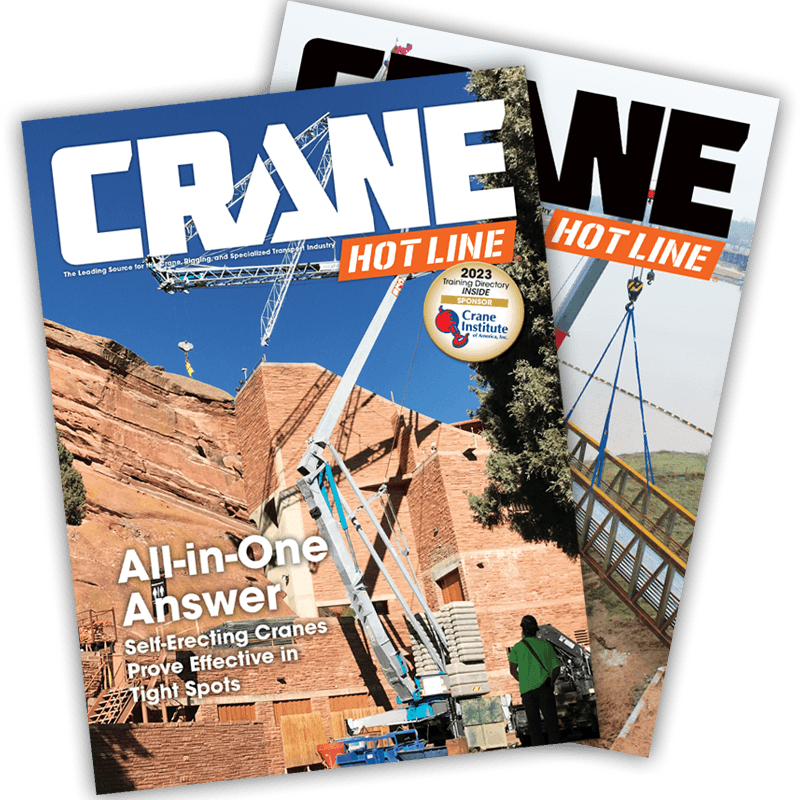Local Governments, Federal OSHA on the Brink of New Crane Safety Regulations
September 24, 2008 • New crane safety regulations were a key topic of discussion during the Specialized Carriers & Rigging Association's (SC&RA) Crane & Rigging Workshop, held last week in
The public will have a limited amount of time to make comments on the document, scheduled to be published in the Federal Register on Oct. 3, 2008. Members of the SC&RA emphasized the importance of supporting the proposed standard. The association encourages crane owners to make positive comments on specific areas to counteract any negative comments likely to be received from special interest groups. The SC&RA will provide sample letters on its website.
While operator certification has received the most media attention, there are other areas of equal significance in the proposed standard, such as contractor-controlling entity and working near powerlines.
Meanwhile, a number of cities and states are in the process of drafting crane safety regulations.
One of the biggest complaints of crane owners is that city- and state-level governments have had “knee-jerk reactions” to recent accidents. However, when government works with crane professionals, the opposite outcome is possible.
“Everybody in the industry in
“One Maryland Occupational Safety and Health staff member said that in his 30 years there he'd never seen anything like this before where union, non-union, safety organizations, state employees, were all working together on a common goal,” explained Hileman.
According to Hileman, riggers and signal persons are included in this document because they are two of the three critical parts of the safety lifting equation, the third being the operator. “So many times they put the blame or the responsibility for an accident on the crane operator. The fact is, there have been a lot of different situations where the crane operator was signaled incorrectly, or the load was rigged incorrectly,” he said.
In Maryland, the master rigger, who can direct rigging operations, must have five years of experience in the type of rigging he's performing, such as tower-crane erecting, dismantling and jumping. A Level 1 rigger has to know hand signals and the basics of crane operations, while Level 2 riggers, having more experience, can jump, erect or dismantle a tower crane or put a large crawler crane together.
“Rigging is critical. And the crane operator must be signaled by an individual who has the proper training so he doesn't give the wrong signal,” said Hileman. Likewise, assembly, disassembly, and tower crane climbing, erection, and dismantling are critical tasks, he said.
In authoring the regulations, the Maryland Crane Coalition used OSHA's proposed standard for cranes and derricks as a gauge for its own. It also borrowed from the National Commission for the Certification of Crane Operators (NCCCO), which is launching a program for riggers and signal persons. However, the group had to get past a
“Anytime something happens with a crane it makes CNN. In the past, you might not have heard about it, but even near misses are making headlines now,” said Hileman. Because of the number of fatal or near-fatal crane-related accidents that have occurred just this year, other cities and states have taken, or are considering, similar action. Among them are
“If they can pull from our document, and if it helps make them more safe, we're happy to share with them what we've come up with,” he said. He also believes there should be one set of rules for the whole state rather than individual cities or counties establishing their own regulations.
His only regret is that the regulations don't address the role fatigue may play in potential accidents. Often, local governments require cranes to be erected and critical lifts made in the dead of night so as not to block streets or cause other challenges. “But the state can't regulate city laws, so we didn't put that language in to the regulations,” Hileman said.
A


